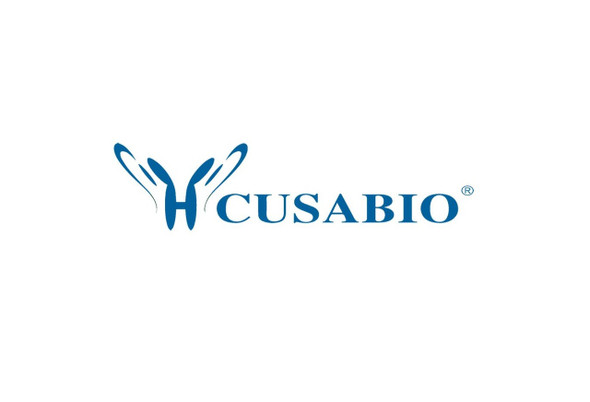Cusabio Virus & Bacteria Recombinants
Recombinant Nostoc ellipsosporum Cyanovirin-N | CSB-YP305860NHP
- SKU:
- CSB-YP305860NHP
- Availability:
- 25 - 35 Working Days
Description
Recombinant Nostoc ellipsosporum Cyanovirin-N | CSB-YP305860NHP | Cusabio
Alternative Name(s): CV-N
Gene Names: N/A
Research Areas: Others
Organism: Nostoc ellipsosporum
AA Sequence: LGKFSQTCYNSAIQGSVLTSTCERTNGGYNTSSIDLNSVIENVDGSLKWQPSNFIETCRNTQLAGSSELAAECKTRAQQFVSTKINLDDHIANIDGTLKYE
Source: Yeast
Tag Info: C-terminal 6xHis-Myc-tagged
Expression Region: 1-101aa
Sequence Info: Full Length
MW: 14.7 kDa
Purity: Greater than 90% as determined by SDS-PAGE.
Relevance: Mannose-binding lectin.Its activity in situ is unknown, however it acts as a viral entry inhibitor, inhibiting HIV-1, HIV-2 and simian immunodeficiency virus (and some other viruses such as feline immunodeficiency virus, measles virus and human herpesvirus) infection and replication. It prevents essential interactions between the envelope glycoprotein and target cell receptors by binding to carbohydrates on viral protein gp120 and possibly by other mechanisms as well. Addition to cells must occur before or shortly after virus addition. It also inhibits cell-to-cell fusion, and virus-to-cell and cell-to-cell transmission of a viral infection. Is remarkably stabile; the protein can withstand multiple freeze-thaw cycles, dissolution in organic solvents, treatment with salt, detergent, H2O2 and boiling without significant loss of anti-HIV activity.
Reference: "Discovery of cyanovirin-N, a novel human immunodeficiency virus-inactivating protein that binds viral surface envelope glycoprotein gp120: potential applications to microbicide development." Boyd M.R., Gustafson K.R., McMahon J.B., Shoemaker R.H., O'Keefe B.R., Mori T., Gulakowski R.J., Wu L., Rivera M.I., Laurencot C.M., Currens M.J., Cardellina J.H. II, Buckheit R.W. Jr., Nara P.L., Pannell L.K., Sowder R.C. II, Henderson L.E. Antimicrob. Agents Chemother. 41:1521-1530(1997)
Storage: The shelf life is related to many factors, storage state, buffer ingredients, storage temperature and the stability of the protein itself. Generally, the shelf life of liquid form is 6 months at -20?/-80?. The shelf life of lyophilized form is 12 months at -20?/-80?.
Notes: Repeated freezing and thawing is not recommended. Store working aliquots at 4? for up to one week.
Function:
Involvement in disease:
Subcellular Location:
Protein Families:
Tissue Specificity:
Paythway:
Form: Liquid or Lyophilized powder
Buffer: If the delivery form is liquid, the default storage buffer is Tris/PBS-based buffer, 5%-50% glycerol. If the delivery form is lyophilized powder, the buffer before lyophilization is Tris/PBS-based buffer, 6% Trehalose, pH 8.0.
Reconstitution: We recommend that this vial be briefly centrifuged prior to opening to bring the contents to the bottom. Please reconstitute protein in deionized sterile water to a concentration of 0.1-1.0 mg/mL.We recommend to add 5-50% of glycerol (final concentration) and aliquot for long-term storage at -20?/-80?. Our default final concentration of glycerol is 50%. Customers could use it as reference.
Uniprot ID: P81180
HGNC Database Link: N/A
UniGene Database Link: N/A
KEGG Database Link: N/A
STRING Database Link: N/A
OMIM Database Link: N/A









